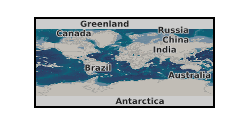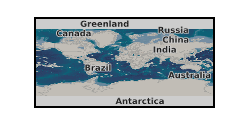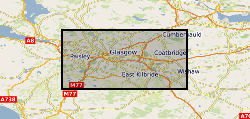Geoscientific information
Type of resources
Topics
Keywords
Contact for the resource
Provided by
Years
Formats
Representation types
Update frequencies
-

A core scanning dataset from the BHA-101 drill core that was drilled onshore at the Ince Marshes site near the village of Elton, Cheshire, UK as part of the UK Geoenergy Observatories (UKGEOS) Cheshire ground investigation funded by UKRI/NERC. This core scanning dataset pack contains high-resolution optical and radiographic images, X-ray fluorescence (XRF) and physical property downcore point measurements on core from 71.12 m to 121.1 m (Sherwood Sandstone Group) obtained at the Core Scanning Facility (CSF) at the British Geological Survey (BGS).
-

The initial borehole information pack from the TH0424 Ground Investigation Borehole drilled as part of the UK Geoenergy Observatories (UKGEOS) Cheshire facility. TH0424 was drilled to TD of 101 m between the 08-Nov-2021 and 30-Nov-2021. Drill core was collected from 2 m – 101 mm with 100 mm diameter. This initial data release pack from BGS contains composite and digital wireline logs alongside daily driller's borehole records. This information pack also contains the Initial Core Scan dataset from the BGS Core Scanning Facility (https://doi.org/10.5285/b06d44e6-324d-4e19-bf78-a4520b9b87c8).
-

IDA267644 Methane and CO2 gas concentrations and stable isotope analyses of select core samples from GGC01 borehole of the Glasgow UKGEOS facility. Core samples were collected approximately every 10m depth in gas tight isojars by the BGS. Geochemical gas analyses was carried out at the Scottish Universities Environmental Research Centre (SUERC) and consisted of bulk concentration analysis using gas chromatography; followed by δ13CCH4, δ13CCO2, and δD stable isotope analyses on a methane combustion line (full methods attached). This data was collected to investigate the variability of gas fingerprints with depth within the Glasgow coal mine workings, and unmined Carboniferous coal measures. Samples and data are derived from the UK Geoenergy Observatories Programme funded by the UKRI Natural Environment Research Council and delivered by the British Geological Survey.
-

IDA272269 Methane and CO2 gas concentrations and stable isotope analyses of cutting samples from GGA05 and GGA08 boreholes of the Glasgow UKGEOS facility. Cutting samples were collected approximately every 3m depth in gas tight isojars by the BGS. Geochemical gas analyses was carried out at the Scottish Universities Environmental Research Centre (SUERC) and consisted of bulk concentration analysis using gas chromatography; followed by δ13CCH4, δ13CCO2, and δD stable isotope analyses on a methane combustion line (full methods attached). This data was collected to investigate the variability of gas fingerprints with depth within the Glasgow coal mine workings, and unmined Carboniferous coal measures. Samples and data are derived from the UK Geoenergy Observatories Programme funded by the UKRI Natural Environment Research Council and delivered by the British Geological Survey.
-

Data produced during three BGS ground gas surveys (August 2018, and May and October 2019) of up to 83 point measurements across four pre-determined locations within the UK Geoenergy Observatories (UKGEOS) Glasgow site, located to the south of the Cuningar Loop Woodland Park. The dataset includes measurements of CH4 and CO2 flux between the ground surface and lower atmosphere, along with concentrations of CO2, O2, H2, H2S and ‘residual balance’ in near surface ground gas measured at c.70 cm below ground level. Further details about the dataset can be found in the accompanying report. http://nora.nerc.ac.uk/id/eprint/528737/
-

The data represent ground motion results obtained from Interferometric Synthetic Aperture Radar (InSAR) for the UKGEOS – Glasgow site. The InSAR techniques used is called Interferometric Point Target Analysis (IPTA) and the BGS processing is based on Sentinel-1 radar satellite data for the period August 2015 - June 2017. The results include time series of displacement (in mm) during this interval and average velocity across the whole period (in mm/yr) along the satellite Line of Sight (Hanssen, 2001). InSAR has provided information on the baseline conditions of ground stability ahead of any underground activity planned in at the Glasgow Geothermal Energy Research Field Site (GGERFS) as described in Bateson and Novellino (2019). References: Bateson, L.; Novellino, A.. 2019 Glasgow Geothermal Energy Research Field Site : ground motion survey report. Nottingham, UK, British Geological Survey, 35pp. (OR/18/054) (Unpublished). Available at http://nora.nerc.ac.uk/id/eprint/524555/ Hanssen, R., 2001. Radar Interferometry: Dordrecht Kluwer Academic Publishers, The Netherlands (2001) (308 pp.)
-

The borehole information pack from borehole GGB04, site 05 of the UK Geoenergy Observatories (UKGEOS) Glasgow facility. This release from the British Geological Survey (BGS) contains BGS and Drillers’ logs, a listing of archived rock chips and a descriptive report. The environmental baseline characterisation and monitoring borehole was drilled between 4th July and 1st August 2019 (start of drilling to casing installation date) to 16 m drilled depth. The cased borehole was hydrogeologically tested in Febuary 2020. Rock chip samples were taken during the drilling process and have been archived at the National Geological Repository at BGS Keyworth. Further details can be found in the accompanying report http://nora.nerc.ac.uk/id/eprint/528083 DOI https://dx.doi.org/10.5285/d31f33b8-b34a-4843-b2d2-545722bf94ae
-

Apatite Fission Track (AFT) single grain count and horizontal confined track length data acquired from 6 sandstones samples from UKGEOS Glasgow borehole GGC01 drilled in the Dalmarnock area of Glasgow. The sandstones were retrieved from depths of 65, 98, 135, 150, 168 and 198 metres and were Westphalian in age coming from the Middle and Lower Scottish coal measures. Each sample has its BGS Subsample SSK number and an ascribed name in reference to its depth of collection with the added initials of the researcher i.e., 65 AH. The data is presented in 2 files one containing the AFT count data and the other containing the AFT length measurements. The AFT count data of each sample is found in excel file containing the spontaneous and induced track counts of a grain and accessory data of that grain e.g., the calculated age (calculated using the program Isoplotr) and calculated uranium concentration. The AFT length data of each sample comes in a separate excel file with the measured lengths and c-axis corrected lengths of HCTs of a sample, all Dpar measurements are also listed here. Samples and data are derived from the UK Geoenergy Observatories Programme funded by the UKRI Natural Environment Research Council and delivered by the British Geological Survey.
-

The final borehole information pack from the TH0424 Ground Investigation Borehole drilled as part of the UK Geoenergy Observatories (UKGEOS) Cheshire facility. TH0424 was drilled to TD of 101 m between the 08-Nov-2021 and 30 Nov-2021. Drill core was collected from 2 m – 101 m with 100 mm diameter. This final data release pack from BGS contains composite and digital wireline logs alongside daily driller's borehole records, sedimentary and discontinuity logging and core analysis data. This information pack also contains the Initial and additional Core Scanning datasets from the BGS Core Scanning Facility (https://doi.org/10.5285/b06d44e6-324d-4e19-bf78-a4520b9b87c8 and https://doi.org/10.5285/381e9664-0f43-4e4c-90ae-1b16ba83681b).
-

The UK Geoenergy Observatories (UKGEOS) Glasgow superficial deposits GSI3D model outputs, created by the British Geological Survey, provide a semi-regional overview of the depth, thickness and extent of glacial and post-glacial lithostratigraphic units above rockhead. The model allows users to visualise the likely subsurface sequence to be found beneath this part of Glasgow, applicable at a scale of around 1: 25,000 to 1: 10,000. The data is supplied as grids and shapefiles over a 7 by 4.15 km area, with the depth range to around 40 m below Ordnance Datum. This model describes an interpretation of the shallow geology updated to incorporate the results of drilling the 12 UKGEOS Glasgow boreholes (post-drill model). Further details and model limitations can be found in the accompanying metadata report http://nora.nerc.ac.uk/id/eprint/531155/ . DOI: https://doi.org/10.5285/915f690f-32cf-41b7-984e-c32344d3a543
 UKGEOS Data Catalogue
UKGEOS Data Catalogue